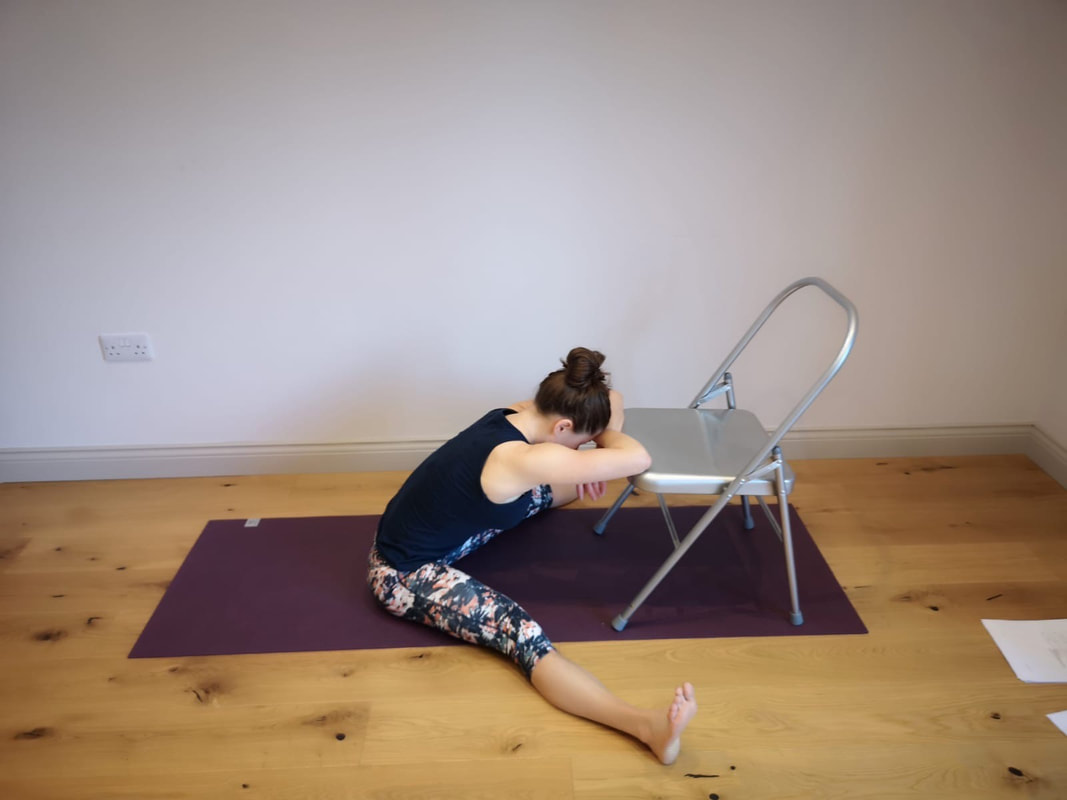|
For a routine to practice during menstruation visit the online class page and choose the bite size yoga class called Menstrual sequence.
This article is to is to guide women on the how’s and why’s of adjusting their practice during their monthly cycle. There is a general practice done during menstruation, such as forward extensions and supine postures and avoidance of all the inversions, but everyone‘s needs slightly differ, therefore, everyone should have discrimination and understand their own problems, weakness and particular needs on different days. Regular practice brings a deeper sensitivity and awareness of these things. Sometimes we feel absolutely healthy and sometimes we feel hopeless. This is especially true for women during certain days of their menstrual cycled it’s important we go with that and don’t fight it. A key point to understand is that the menstrual blood has to be discarded, you should not hold the abdomen tight and so must choose those āsana-s which soften rather than harden the abdomen. Also during menstruation that you should avoid all inversions (upside down poses) Because the inversions disturb the downward flow and therefore the toxins being released. If the toxins, the waste matters such as sweat, urine, faeces, gas, menstrual blood and pus are retained, then the body suffers. Along with the above inversions you have to avoid arm balances and so on. Also you need to know that your legs should not get tired and that is the reason why you avoid (or minimise) the standing āsanas. During Menstruation instead you should practise supine āsanas followed by forward extensions with the forehead supported.The sitting postures are definitely helpful too, for when one wants to sit just quietly, using the support of the wall in order to learn to lift the spine. These āsanas (postures) preserve energy. It is important to under- stand that during the menstrual period, because oestrogen is going up, you feel active and you think that you can do everything. But the same oestrogen that will be reaching its peak in the next four days can be utilised for the right purpose. So you should not drain energy or create an imbalance in the hormones, if you preserve energy during menstruation, you will have better energy and a smoother cycle for the rest of the month. Also during menstruation you can not do much prānāyāma. You find that your capacity is less, there is often a feeling of internal fatigue. You should not force your body to do prānāyāma. Enjoy a long Śavāsana. Even if you sleep, it is nice, and there is nothing wrong with that. This has been written in close reference to Geeta Iyengar “The practice of women for the whole month’, Printed and published by the Iyengar Yoga Association (UK) April 2009. This is a fantastic 17 page document which I highly recommend anyone with menstrual issues to read. |
BlogYoga with Kate Stannard
�
Archives
September 2023
Categories |





